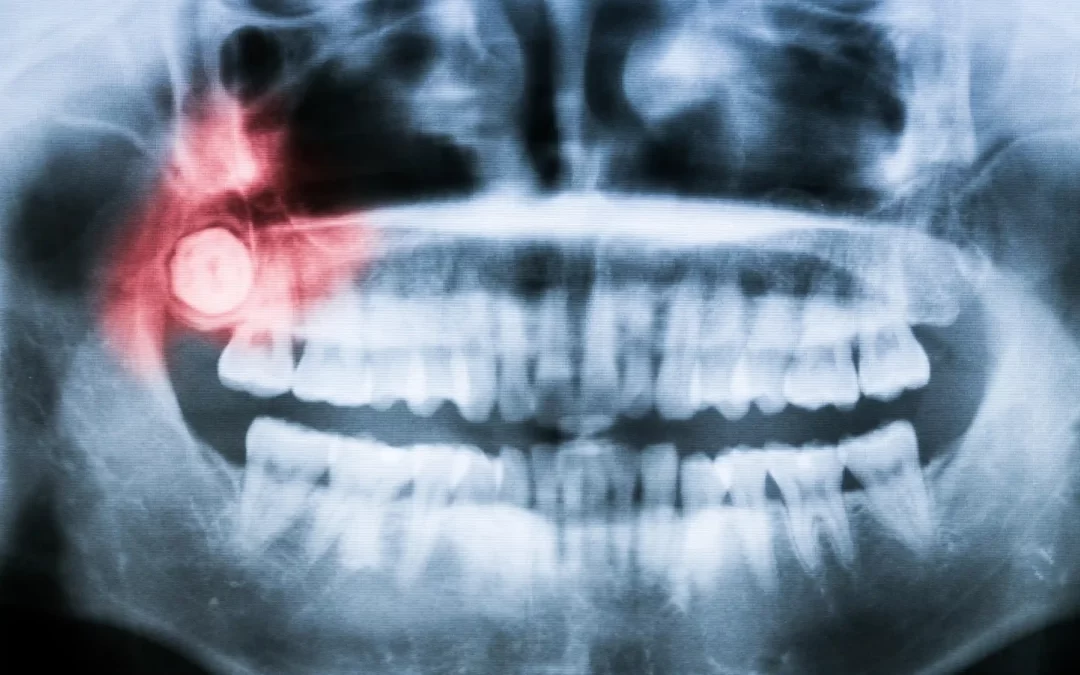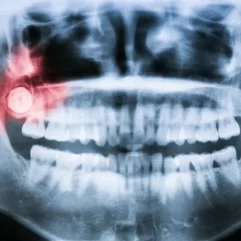Most people are well aware of wisdom teeth—the last set of molars that often cause more trouble than they’re worth. For some, they come in without a hitch. For others, they can lead to a world of pain and complications.
Continue reading as we talk about Caitlin Alsop, a young Australian woman who experienced one of the most bizarre cases related to an impacted wisdom tooth you’ve ever heard of. Her story serves as a stark reminder of what happens when these teeth don’t behave as they should.
As we delve into Caitlin’s unusual journey, we’ll explore what an impacted wisdom tooth really is and the various types that exist.
The Shocking Case of Caitlin Alsop

It all started as a sporadic facial rash for Caitlin Alsop. In discomfort but not yet alarmed, she headed over to the doctor who diagnosed her symptoms as those experienced with the common flu.
According to Caitlin, she was prescribed medication to treat her flu and was asked to take it easy until she felt better. After a night out for dinner with a friend, things took a sudden, severe turn for the worse. Her tongue swelled and she started drooling. Thinking it was just an allergic reaction, she tried to take an antihistamine orally – but wasn’t able to swallow it.
After heading to the emergency room, the on-call doctor also believed that Alsop was suffering from anaphylaxis, but the usual treatment for this life-threatening condition did not work. Soon after, she began losing consciousness.
Her tongue turned black, and doctors suspected necrotizing fasciitis, a bacterial infection referred to as the “flesh-eating disease.” But after further testing and a CT scan, the true cause of her illness was finally revealed: an impacted, infected wisdom tooth.

The infection had forced her jugular vein, located on the side of her neck, to be crushed, resulting in emergency surgery to remove the tooth. She was in a coma for nine days and needed a year to recover from the devastating repercussions.
Caitlin finally discovered that her infection had been sepsis, a condition where the body is unable to respond to an infection effectively. and how serious risks can accompany what many consider a routine dental issue. Read more about Caitlin Alsop and her horrifying experience with an impacted wisdom tooth.
What is an impacted wisdom tooth?
An impacted wisdom tooth occurs when a third molar fails to fully emerge through the gums. This can happen for various reasons, including lack of space in the jaw or misalignment. These teeth typically appear in late adolescence or early adulthood. Unfortunately, they often become trapped beneath the gumline and may lead to discomfort or dental complications.
Symptoms might include swelling, pain, and even infection. It’s important to monitor any changes in your mouth during this time. If left untreated, an impacted wisdom tooth can create more serious issues such as crowding of nearby teeth or damage to neighboring roots. Regular dental check-ups are essential for identifying potential problems early on.
Types of Impacted Wisdom Teeth
Impacted wisdom teeth come in several types, each presenting unique challenges:
- The most common is the mesial impaction. Here, the tooth tilts toward the front of the mouth. This type often leads to crowding and pain, making it a frequent candidate for extraction.
- Then there’s the horizontal impaction. In this case, the tooth lies flat beneath the gum line, pressing against neighboring molars. This can result in significant discomfort and complications like infection.
- Vertical impactions are less common but still problematic. The tooth grows straight up but remains trapped in the jawbone or gums. While some people may not experience symptoms initially, they can develop issues over time.
- Distal impactions occur when wisdom teeth tilt backward toward the throat. These can be tricky because they might cause problems with adjacent teeth and lead to cyst formation if left untreated.
Understanding these types helps anticipate potential risks associated with an impacted wisdom tooth.
The Conclusion
Caitlin Alsop’s situation is a concerning reminder of the potential complications that can occur from an impacted wisdom tooth. Her experience highlights how seemingly routine dental issues can escalate into serious health problems if left untreated.
The risks of an impacted wisdom tooth should not be taken lightly. If you are experiencing discomfort or suspect that your wisdom teeth may be problematic, consulting a dentist is crucial for timely intervention. Ignoring these signs could lead to painful consequences down the road.
To learn more about the subject, read our blog post about what happens when you don’t get your wisdom teeth removed on time.
If you have questions or need additional information regarding impacted wisdom teeth, please Contact Us or Request a Quote to send us your dental inquiry and we’ll get back to you.












